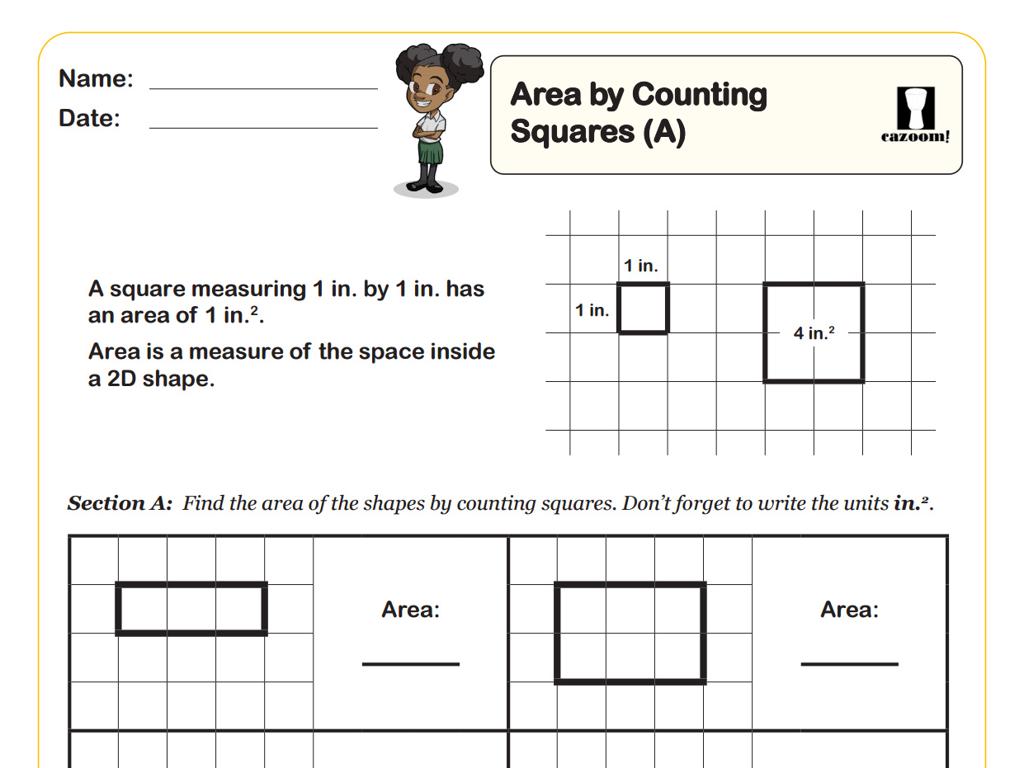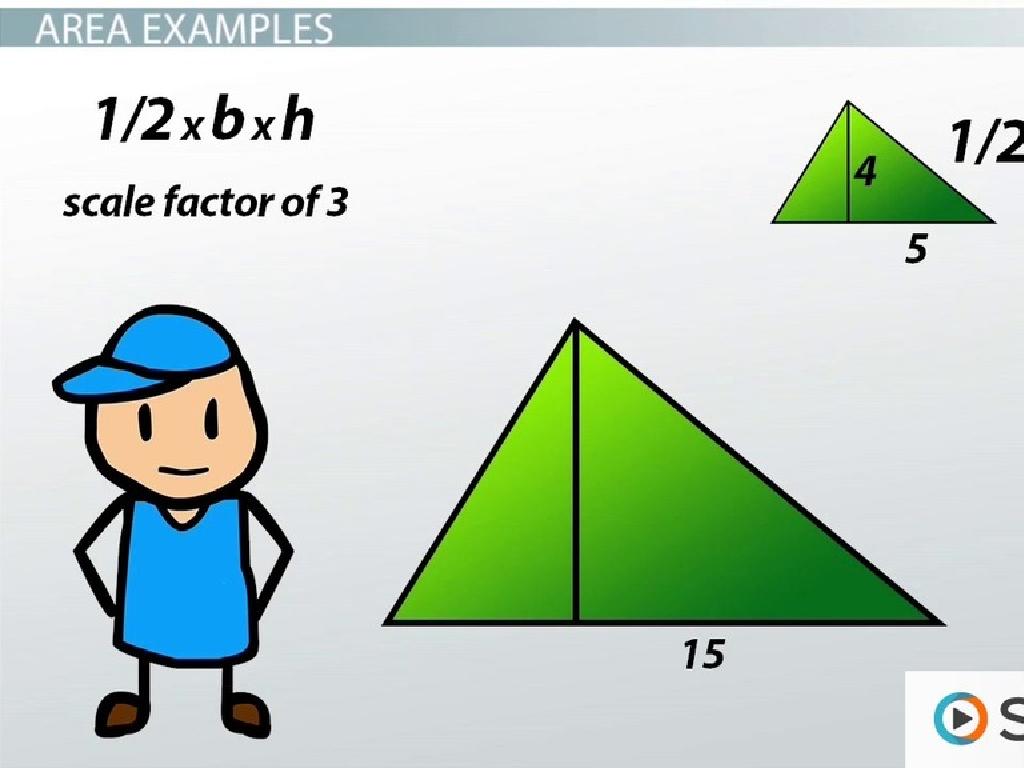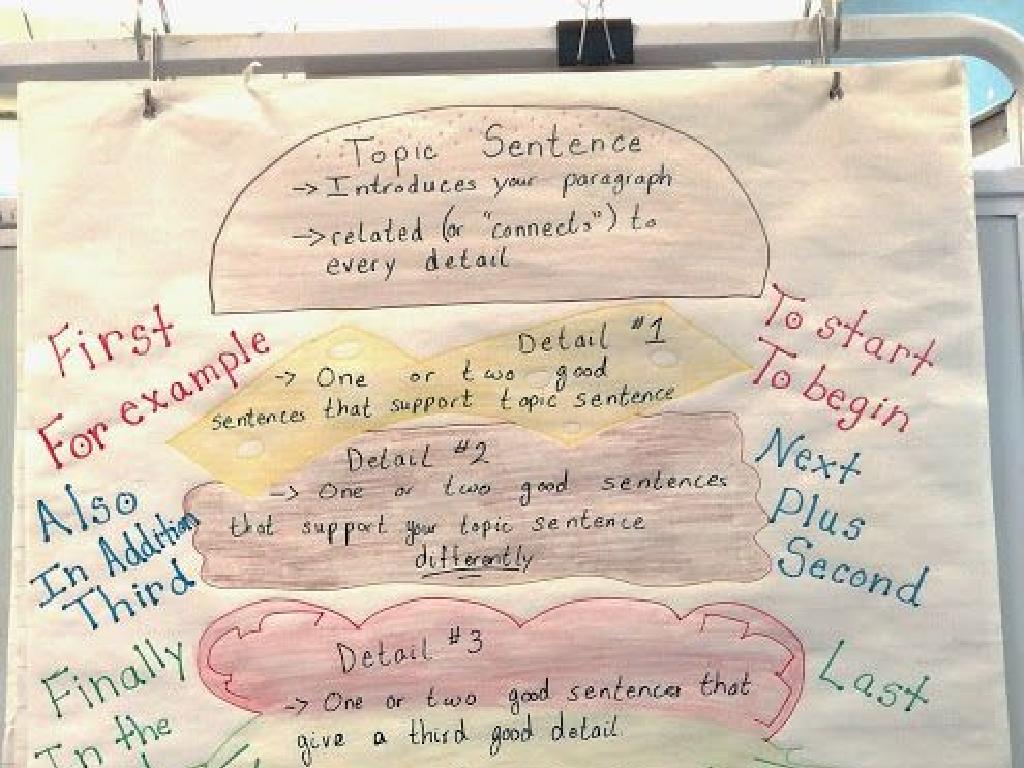Identify Dependent And Independent Clauses
Subject: Language arts
Grade: Sixth grade
Topic: Sentences, Fragments, And Run-Ons
Please LOG IN to download the presentation. Access is available to registered users only.
View More Content
Understanding Sentences and Clauses
– Differentiate sentences and fragments
– A sentence has a subject and verb and expresses a complete thought, unlike a fragment.
– Recognize run-on sentences
– Run-ons are sentences incorrectly joined without punctuation or conjunction.
– Define clauses in sentences
– Clauses are groups of words with a subject and verb.
– Identify dependent and independent clauses
– Independent clauses stand alone; dependent clauses cannot.
|
Begin the class by explaining the difference between complete sentences and fragments, emphasizing the importance of expressing a complete thought. Then, discuss run-on sentences and how they can confuse the reader. Introduce the concept of clauses, the building blocks of sentences, and explain that every clause contains a subject and a verb. Highlight the difference between independent clauses, which can stand alone as a sentence, and dependent clauses, which cannot. Use examples to illustrate these concepts. For instance, ‘Because I was late’ is a dependent clause that doesn’t express a complete thought without additional information. Encourage students to create their own examples and identify clauses in sentences from their reading.
Exploring Clauses in Sentences
– Definition of a clause
– A clause is a group of words with a subject and a verb.
– Independent vs. Dependent clauses
– Independent clauses can stand alone; dependent clauses cannot.
– Examples of each clause type
– ‘I read’ is independent; ‘because I learn’ is dependent.
– Understanding clause usage
– Recognizing clauses helps in writing complete sentences.
|
Begin by explaining that a clause is a fundamental component of sentence structure, containing a subject and a verb. Highlight the difference between independent clauses, which express a complete thought and can stand alone as a sentence, and dependent clauses, which do not express a complete thought and must be connected to an independent clause. Provide clear examples for each to solidify understanding. Emphasize the importance of recognizing these clauses to avoid sentence fragments and run-ons, which are common issues in writing. Encourage students to practice identifying clauses in sentences they read and write.
Understanding Independent Clauses
– Defining an independent clause
– An independent clause expresses a complete thought and can be a sentence.
– Independence equals complete thought
– It has a subject and verb and doesn’t need other clauses to stand alone.
– Examples of independent clauses
– ‘She runs daily.’ and ‘The sun set.’ are examples of independent clauses.
|
This slide aims to help students identify what an independent clause is and how it functions within the structure of a sentence. An independent clause is a group of words that contains a subject and a predicate and expresses a complete thought. This means it can stand alone as a sentence. Examples should be clear and simple to ensure understanding. Encourage students to create their own sentences that could stand alone and discuss why they are considered independent clauses. This foundational knowledge will be crucial as they progress to identifying dependent clauses and understanding complex sentence structures.
Exploring Dependent Clauses
– Traits of dependent clauses
– Dependent clauses have a subject and verb but don’t express a complete thought.
– Why they need support
– They can’t stand alone as sentences because they leave the reader with questions.
– Dependent clause examples
– ‘Although she was tired’ and ‘If you can dream it’ are examples of dependent clauses.
|
This slide aims to help students identify dependent clauses and understand their role within the structure of sentences. Dependent clauses, also known as subordinate clauses, contain a subject and a verb but cannot stand alone as a complete sentence. They are designed to attach to independent clauses to add additional information. When presenting examples, highlight how these clauses would be incomplete or raise questions if they were to stand alone. Encourage students to create their own dependent clauses and think about what information might be missing if there is no independent clause attached. This will prepare them for combining clauses effectively in their writing.
Activity: Clauses in Action
– Understand independent clauses
– An independent clause can stand alone as a sentence.
– Recognize dependent clauses
– A dependent clause cannot stand alone and needs an independent clause.
– Underline independent clauses in blue
– Circle dependent clauses in red
|
This activity is designed to help students identify and differentiate between independent and dependent clauses. An independent clause expresses a complete thought and can stand alone as a sentence, while a dependent clause cannot stand alone and needs an independent clause to complete its meaning. Provide students with sample sentences and have them practice by underlining the independent clauses in blue and circling the dependent clauses in red. This visual distinction will aid their understanding and retention. Possible activities include working with partners to identify clauses in sentences, creating a worksheet with a mix of independent and dependent clauses, and having a class discussion to review the answers.
Combining Clauses in Complex Sentences
– Combining clauses in sentences
– Independent and dependent clauses can be combined to form a complete thought.
– Conjunctions connect clauses
– Words like ‘and’, ‘but’, ‘because’, ‘if’, ‘when’ link clauses together.
– Forming complex sentences
– A complex sentence has one independent clause and at least one dependent clause.
– Practice with examples
|
This slide introduces students to the concept of combining independent and dependent clauses to create complex sentences. Start by explaining that an independent clause can stand alone as a sentence, while a dependent clause cannot. Teach the use of conjunctions to link these clauses together. Provide examples of complex sentences, highlighting the independent and dependent clauses. Encourage students to practice by identifying clauses in sentences and creating their own complex sentences. This will help them understand sentence structure and improve their writing skills.
Let’s Practice: Clauses in Sentences
– Pair up for sentence creation
– Use dependent and independent clauses
– An independent clause can stand alone. A dependent clause cannot.
– Write sentences combining clauses
– Example: ‘Although it was raining (dependent), we still went to the park (independent).’
– Share with the class
|
This class activity is designed to reinforce the concept of dependent and independent clauses through collaborative learning. Have the students pair up and challenge them to write sentences that include both an independent clause (a complete thought) and a dependent clause (an incomplete thought that relies on the independent clause). Encourage creativity and use of complex sentences. After writing, each pair will share their sentences with the class, providing an opportunity for peer learning. As a teacher, facilitate the activity by providing examples and guidance on combining clauses effectively. Possible variations of the activity could include creating a story with alternating clauses, identifying clauses in sentences from a book, or even a competition for the most inventive sentence.
Review and Reflect: Clauses in Sentences
– Recap on clauses learned
We explored dependent and independent clauses.
– Importance of clause recognition
Recognizing clauses helps us avoid run-ons and fragments.
– Discuss clause usage in writing
Understanding clauses can enhance sentence variety and clarity in our writing.
– Share personal insights
|
This slide aims to consolidate the day’s learning about dependent and independent clauses. Start by asking students to summarize what they’ve learned about clauses. Emphasize the importance of recognizing different types of clauses to construct grammatically correct sentences and improve the flow of their writing. Facilitate a class discussion on how understanding clauses can improve their writing, asking for examples of how varied sentence structures can make their work more engaging. Encourage students to share any personal insights or revelations they’ve had during the lesson. This reflection will help reinforce their understanding and the practical application of clauses in their daily writing.
Homework: Mastering Clauses
– Complete clause worksheet
– Write 5 complex sentences
– Combine a dependent clause with an independent clause
– Use dependent and independent clauses
– Remember, a dependent clause cannot stand alone!
– Study for clauses quiz
|
This homework assignment is designed to reinforce the day’s lesson on dependent and independent clauses. The worksheet will provide students with practice identifying each type of clause. When writing complex sentences, students should remember that an independent clause can stand alone as a sentence, while a dependent clause cannot. Encourage students to use a variety of conjunctions and relative pronouns to link their clauses. The upcoming quiz will assess their ability to recognize and use different clauses, so they should review their notes and completed worksheet to prepare.
Class Activity: Clause Scavenger Hunt
– Find clauses in a favorite book
– Use sticky notes to mark them
– Identify independent clauses
– An independent clause can stand alone as a sentence.
– Identify dependent clauses
– A dependent clause cannot stand alone.
|
This activity is designed to help students identify and differentiate between independent and dependent clauses through an interactive scavenger hunt using a book they enjoy. Provide students with sticky notes to mark examples of each type of clause. Independent clauses are complete thoughts that can stand alone as sentences, while dependent clauses rely on other parts of a sentence to make sense. Encourage students to look for clues such as conjunctions that often introduce dependent clauses. Tomorrow, students will discuss their findings, explaining why they identified each clause as independent or dependent, which will reinforce their understanding and ability to analyze sentence structure.






